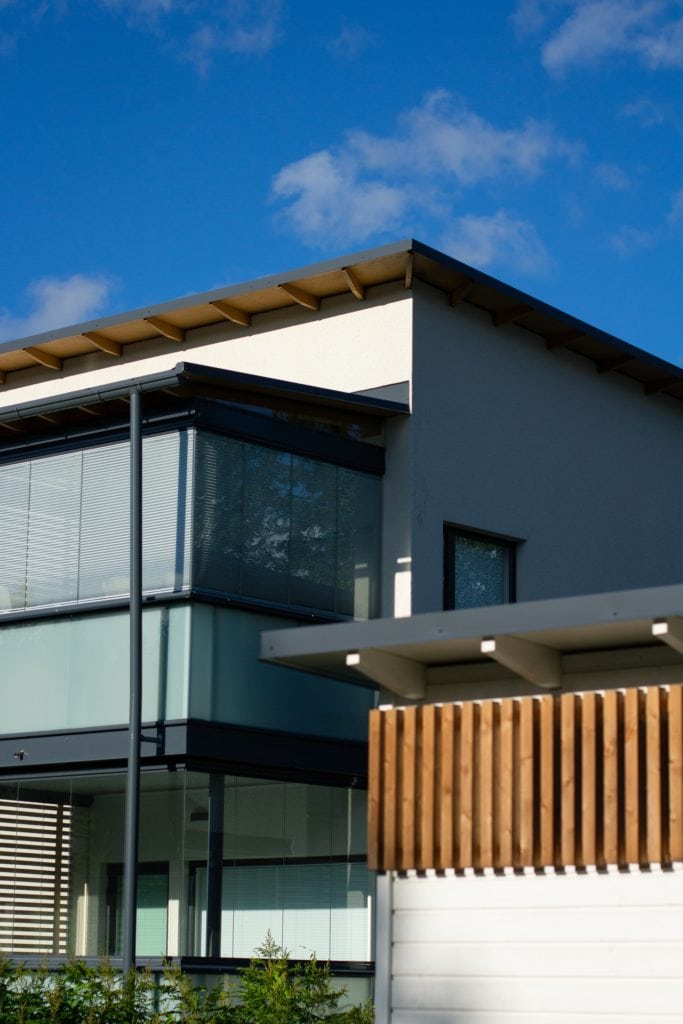What is a Roof Membrane? Types of Roof Membranes Explained

Most roofs are made to be sloped so that water falls off their edges. But with low-slope or flat roofs, water has nowhere to fall off to. This might cause water to pool on your roof and eventually cause damage to your home.
This is why a roof membrane is important for houses with low-slope or flat roofs.
What is a roof membrane, you ask? Simply put, it is a system that prevents water from leaking into your house. It is a form of waterproof covering that protects the interior of your home.
Header Image source: Unsplash
Do You Need a Roof Membrane?
Roof membranes are mainly used for low-slope or flat roofs. They’re made for roofs that have a slope factor of 3/12 or less.
This means that if any part of your roof—like a garage or porch—has a low slope, you should definitely have a roof membrane installed.
If your roof has a slope factor of 4/12 or higher, a roof membrane isn’t necessary. Water would slide right off your roof.
If you live in an area where it rains a lot and you’re worried about water pooling on your roof, get in touch with a roofing company as soon as possible. Discuss your concerns with them and ask if you would need to get a roofing membrane.
Types of Roof Membranes
We’ll be focusing on the three main types of roof membranes and their most common compounds.
Modified Bitumen
Asphalt roofing used to be the go-to system for flat roofs. It was the best solution for preventing leaks to get inside a building.
Modified bitumen is a combination of asphalt and synthetic rubber. It is modified by adding polyester fiber that makes the roof membrane stronger and more durable.
These are easy to install. However, modified bitumen isn’t used as much nowadays. It’s dangerous to the environment. It also gives health risks to the people handling it.
Thermoset Membranes
Thermoset membranes are made from synthetic rubber. The membrane is ‘thermoset’ because materials are heated and fully cured during production. This allows the materials to hold a certain shape and form a heavy-duty bond.
The most common compound used in thermoset membranes is ethylene propylene diene monomer (EPDM). EPDM is usually a black membrane so it’s bound to absorb heat. That’s why it’s not advised to be installed over living spaces like bedrooms.
While there are white EPDM membranes that are made to reflect the sun’s rays, their coating wears away over time.
Thermoset membranes are highly resistant to fire. They almost never burn. However, these membranes are also hazardous to the environment and to the people handling them.
Thermoplastic Membranes
Thermoplastic membranes can be reshaped using heat. This makes them more versatile than thermoset membranes.
The most common compounds used in these membranes are polyvinyl chloride (PVC) and thermoplastic olefin (TPO). These are both white membranes that reflect heat. They do great over bedrooms and living rooms as they keep the rooms cooler.
PVC is a flexible material to use in roofing membranes. It’s has been around longer than TPO and has established a good track record for being used on flat roofs. It’s more expensive, though.
TPO is a cheaper option than PVC. But because manufacturers wanted to keep them affordable, the quality of the first TPO membranes has been compromised. Don’t worry, though. Its formulations have improved a lot these days.
TPO is a good roofing membrane, but it hasn’t been around for long enough to determine its actual lifespan.
Modern bitumen is a multi-ply membrane. You’ll need several layers of it to make a flat roof completely waterproof.
Thermoset and thermoplastic membranes, on the other hand, are both single-ply membranes. They’re more advisable to use in flat roofs as they are more eco-friendly and use fewer materials. This also makes them less dangerous for the environment and for the people installing them.
Roof Membrane Installation

Image source: Unsplash
The average cost of a roof membrane installation is $6.80–$9.73 per square foot. This is about the same price as a square foot of aluminum roofing.
When installing a roof membrane, it would be best to hire a professional roofing team to do the job for you. But if you want to go and buy the materials ahead of time, measure your total roof area first.
Doing so would allow you to know how much roof membrane you need for your flat roof. Buying the materials yourself might save you some money. Just make sure to buy the right materials. If you’re not sure which to buy, leave it to the experts.
The Bottom Line
Low-slope roofs are usually seen in large buildings like hospitals, hotels, and condominiums. They serve as an access point to mechanical systems practically located at rooftops.
Due to advances in modern architecture, flat roofs are now also being widely used in houses. That’s why it’s important to have a roof membrane installed. It keeps water from pooling on your roof and leaking through your interiors.
To recap, here are the different types of roof membranes you can use on your flat roof:
- Modern bitumen. This is a multi-ply roofing membrane that combines synthetic rubber and asphalt to make a durable material.
- Thermoset membranes. The most common compound is EPDM which is usually a black membrane that absorbs heat. It’s best for garages and other non-living areas.
- Thermoplastic membranes. These can be PVC or TPO membranes that are both great in reflecting heat and making the room cooler. PVC has a better reputation as a roofing membrane since it has been around for longer than TPO. But TPO is cheaper than PVC and its quality is just as good.




